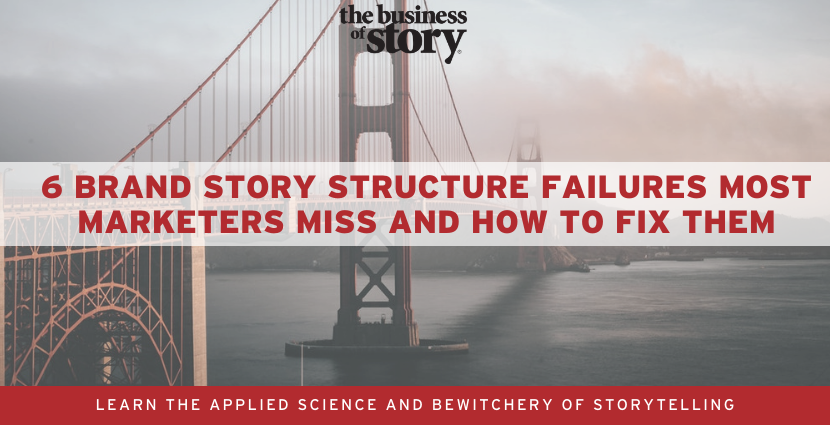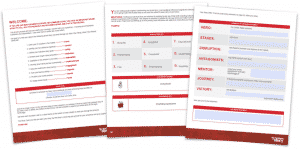Only a sturdy brand narrative, supported by your internal business stories, will bridge you to your future
Most business leaders and marketers focus on their high-level brand narrative. But few use the most powerful stories found within their organization to grow their business and their people. Therefore, this post outlines how to apply the meta nature of storytelling for everything from an overarching brand strategy to on-the-street word of mouth marketing to separate you from your competition.
When I was in the fifth grade, I had my first “worldly” experience. My mom a dad took me and my two younger brothers, Chris and Mike, to San Francisco for a weekend adventure.
It was the first time I had been on an airplane. San Francisco, although just a couple hour flight from Seattle, seemed a world away to me. When we landed at SFO coming in over water, passed Forty-Niners stadium and saw the white Transamerica pyramid tower, I figured this was what grownups meant when they said a place was “cosmopolitan.”
We explored the wharf, rode the cable cars, curled down Lombard street in our rental and climbed Coit Tower on Telegraph Hill.
But when I saw the Golden Gate Bridge… whoa! It was majestic and terrifying. I was beguiled by its Art Deco industrial strength design that coaxes you onto her roadway only to dare you to cross her.
Built from 1933 to 1937, the nearly 9,000-foot suspension bridge spanning the one-mile straight connecting the Bay Area on the peninsula to Marin County is one of the wonders of the modern world.
I remember that half the bridge was erased by fog. It’s orange superstructure defiantly emerged from the marine shroud as it stretched to the far shore.
We entered the bridge and our heads involuntarily craned up trying to take in the first tower as we passed beneath it. My heart rate quickened as my wide eyes looked down on the cold, turbulent salt water some 220 feet below us.
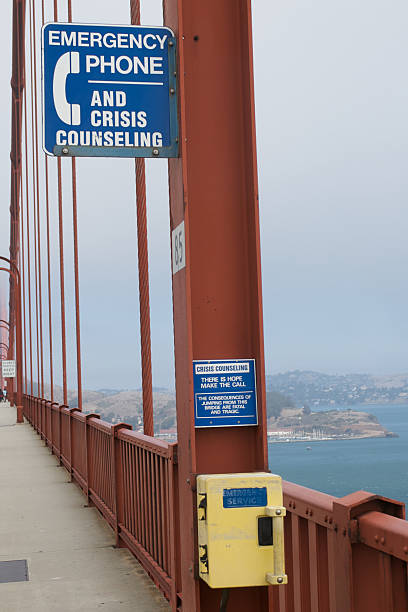
Right in the middle of the arching suspension bridge, our dad looked over his shoulder into the back seat at us three boys and casually noted, “People walk out here and jump off the bridge.”
“Why?” I asked.
“To kill themselves,” he shrugged for effect.
He lifted his finger and pointed past our mom to the suicide phones on the handrail.
“You can use that phone right there to call someone to try and talk you out of jumping if you wanted to,” he said, his calculated first-person reference adding more intrigue to our journey.
My cheeks puckered a little more.
We made it across the middle span, passed under the second tower, across the final stretch, and into Marin County.
“Whew, we made it!”
My butt relaxed.
Potent brand and business stories transport your customers to a better place
Looking back through the eyes of a studied business storyteller, for me the Golden Gate Bridge is an ideal metaphor for the superstructure of story.
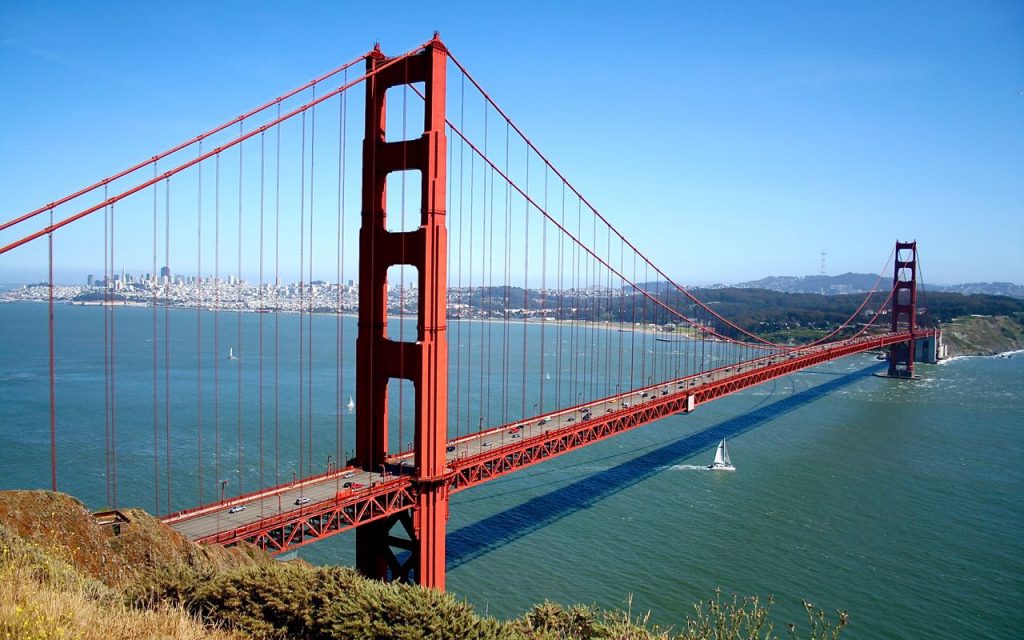
When you cross the Golden Gate you pass through the three distinct acts of story marked by the two 746-foot towers. Act 1 happens as you enter either the northern or southern ends of the bridge to drive over the bay. This is a short act that creates the context and setting for your journey.
Pass under the first tower you come to and you enter into the long arc of act 2. This is where the story picks up its pace – as does your heart rate – crossing the long expanse above the toiling waters below. And as my dad pointed out, this is where your character gets tested, too.
The second tower transitions you into act 3. Your journey is resolved and you are delivered to your destination.
Like all great stories, you have just been transported from one world into a new one.
6 structural failures of most brand stories
Have you heard of “Gallopin’ Gertie”? It is the original Tacoma Narrows Bridge in Washington State.
On November 7, 1940, Gertie was the fifth longest suspension bridge in North America. But by 11:10 am that day, she was a crumpled reef of concrete and steel at the bottom of Puget Sound. The bridge collapse is a monument to the thinly designed structure.
Watch the video and you’ll witness what experts call “Torsional flutter,” the oscillating effect of wind on a solid structure. The problem with the Tacoma Narrows Bridge design was that engineers ignored earlier lessons of building stiff and heavy structures like the Brooklyn Bridge and foolishly created the lightweight bridge that could not withstand the Narrow’s gales.
Consumer winds are finicky, too. Their stories about your brand can oscillate quickly between warm and wonderful to howling mad.
Brands that don’t build sturdy, honest stories that bridge their employees and customers to a better future suffer the same fate.
Collapse.
Consider the downfall of brands like Blackberry, JCPenney, and Chipotle due to brand stories that could not stand up to the prevailing winds in their respective industries.
How is the integrity of your brand story?
1. Does your brand story clearly define how you are different from your competition?
Brander extraordinaire, Sally Hogshead, states that when it comes to your brand, “Different is better than better.” Christopher Lochhead, in his book, Play Bigger: How Pirates, Dreamers and Innovators Create and Dominate Markets, defines the importance of category design for brand dominance.
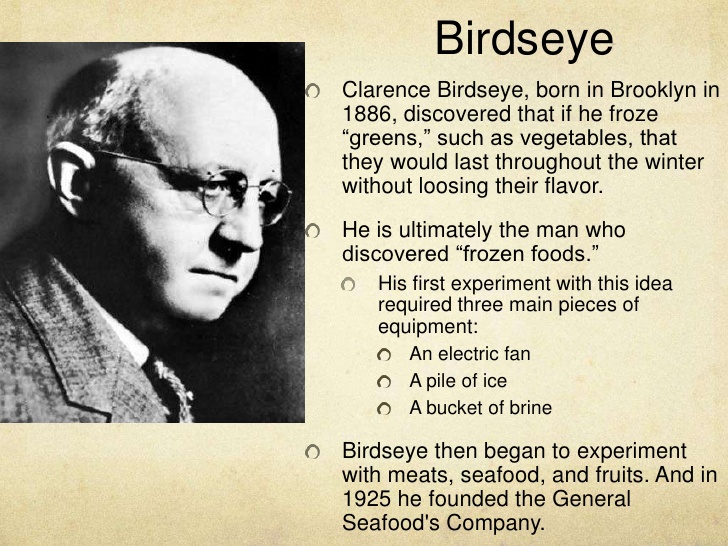
According to Lochhead, Birdseye designed the category of frozen vegetables in 1924 and has been the category king ever since.
Red Bull designed the energy drink market in 1987 and dominates the market today selling over 6 billion cans in 2016.
Blake Mycoskie founded Toms Shoes in 2006 and defined the category of the purpose-driven shoe company by providing a free pair of shoes to needy kids with the purchase of every pair they sell.
Brands that own a differentiated category command upwards of 80 percent of the market.
Is your brand viewed as a commodity or a commander in the eyes of your customers? What do you do that’s different and how do you capture your category in how you tell your brand story?
2. Have you identified your #1 audience?
When the great recession hit, my initial instinct was to broaden our reach for the survival of our agency. But the opposite was true, we needed more focus. We survived because we targeted purpose-driven brands.
When we lost our focus and went for the money, the relationships inevitably failed. We found ourselves with clients that did not share the same values and beliefs we held.
The Rainforest Alliance knows its audience so well, it describes its viewer to a T in this funny Follow the Frog PSA to save the rainforest, which is a rather daunting task.
This approach of a hyper-focused offering to a specialized audience was underscored to me when I was presenting at Michael Gass‘ Fuel Lines ad agency conference in Nashville, TN, in October of 2015. I realized after talking with many agency owners that there were two kinds of companies in attendance: large full-service agencies that were struggling, and hyper-focused firms that were growing fast.
I asked one guy named Nick how business was. He was a big ‘ol bearded redhead guy that looked more like a duck hunter than an ad executive, and he exclaimed, “Fantastic!” in his South Carolina drawl. So I asked him why.
“We only work with clients who supply custom hard-wood countertops and cabinets, he said. We have clients all over the country.”
“Aren’t they all competitors hiring the same agency?” I asked.
“Yep. But they come because of our expertise in their world,” he said.
His firm is the go-to ad agency for the millwork industry and is killing it.
How focused are you on your primary target audience and how well do you know their wants and needs? Be the sturdy bridge to their future designed for their environment and you will stave off your competition.
3. Does your brand story focus on what you make, or what you make happen?
Face it, we all get caught in the weeds of thinking what we make is special. But it’s what we make happen in the lives of our customers that is the strength of our brand stories.
Stop selling logical features and functions when emotional storytelling is what transports customers with your product offering. Describe the real human impact of your offering.
Red Bull doesn’t just make the most popular energy drink in the world. Red Bull gives you wings. Apple doesn’t just sell computers. They inspire you to Think Different. And it’s love that makes a Subaru a Subaru.
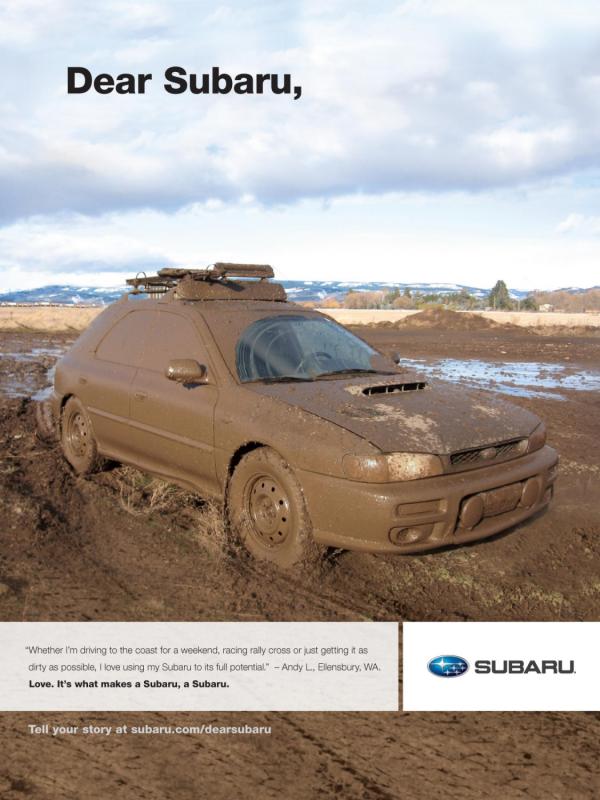
In each example, the brand has a well-defined purpose greater than just making money that strengthens their story.
4. Is your brand story an ego fest?
Who is at the center of your brand story: you or your customer? I heard this best defined by Bozoma Saint John, the new chief branding officer Uber tapped to turn around its torsional fluttering brand before it collapses. She said in her interview with Lewis Howes, “It’s not about the artist but the audience.”
Most brands think they are the hero in their journey when they actually play the more important role of mentor or guide. Place your customers at the heart of your brand narratives by telling their stories and the impact you have on their lives.
Brands that celebrate their customers include Dove’s Real Beauty campaign, or TD Ameritrade’s “Green Room” campaign (Michele and I laugh as we relate to the lady in this spot. Isn’t that how you want your brand stories to connect?)
5. Does your brand story capture a purpose greater than just making money?
It’s been documented time and again that customers want to do business with purpose-driven brands.
Top of mind for me is REI and their brilliant #OptOutside Black Friday campaign. Now in its third year, #OptOutside is a celebration of the brand’s ethos of existing to help people get outdoors. Instead of shopping on the maniacal Friday that follows Thanksgiving, REI encourages you to spend time with friends and family outdoors.
Lee Einhorn, the Associate Partner and Creative Director at Venables Bell & Partners, the San Francisco agency who created the campaign, told me on my Thanksgiving week Business of Story podcast episode that the campaign worked to disrupt consumerism because it came from the true North of the organization. “Authenticity trumps all.”
Tell your brand stories on purpose and build an evangelical following of customers who share your beliefs and values.
6. Are you talking the talk?
Yes, I know this is usually “Walking the talk.” Which is crucial. You have to deliver on the promises you make in your brand stories. But what I’m referring to here is actually talking about your brand story by building a storytelling culture within your organization.
“The art of storytelling can be used to drive change, says Sir Richard Branson, founder of Virgin. Today, if you want to succeed as an entrepreneur, you also have to be a storyteller.”
If you want to experience compelling business storytelling in action, read Nike founder Phil Knight’s memoir, Shoe Dog. One of my takeaways from his book is that people find belief irresistible. Here is his comment about why selling shoes seemed so easy after his failures in other selling ventures.
“I realized, it wasn’t selling. I believed in running. I believed that if people got out and ran a few miles every day, the world would be a better place, and I believed these shoes were better to run in. People, sensing my belief, wanted some of that belief for themselves. Belief, I decided, is irresistible.” – Phil Knight

The only way you can express your beliefs is through the true stories about the human impact your brand makes in the lives of your customers. And to strengthen your brand story, get everyone in your organization to spot, tell, archive and share these true stories. Your people are the infrastructure that makes the superstructure of your brand narrative able to persevere in whatever elements your business environment will throw at you.
Help your internal team understand, embrace and live into your brand story and everyone prospers.
The superstructure of your brand and business storytelling
You are now in the last act of your journey with me in this post. You are passing under one of those Golden Gate towers and hopefully transported into a new understanding of how to use brand and business storytelling to grow your company and your career.

Imagine your brand narrative is constructed of the two primary pillars of your position in the marketplace (what makes you different and therefore special), and your purpose, what you make happen to empower your customers. The sweeping cables and support girders represent brand story elements including your unique value proposition, promise, gift and personality. These elements strengthen your narrative to align your story with your vision and mission transporting your customers, employees and stakeholders to a better place.
We help purpose-driven organizations construct their brand story strategy using our proven 10-step Story Cycle system. This creates the superstructure for your brand narrative to clarify your story, grow revenue, amplify your impact and ultimately simply your life.
But a suspension bridge is only as strong as is it’s supporting elements. Therefore, the vertical cables represent the individual true stories within your organization. It is critical to capture, archive and share your stories to bolster your entire brand narrative structure.
We can help you find and develop these stories in your organizations through our Storytelling for Leaders and Storytelling for Sales deliberate practice programs. Brands large and small around the world have grown with these communication training programs to craft and tell compelling true stories that sell.
Design your brand story with the Story Cycle framework and create a storytelling culture with the Storytelling for Leaders and Sales training programs, and you’ll find there will be nothing flimsy about how your brand transports its audiences and customers into a whole new world.
A well-constructed brand narrative will:
- Clarify your brand story to amplify your impact
- Define your course to get everyone pulling in the same direction
- Rise above a sea of competition with an authentic brand story that differentiates you from your competition
- Transport your audiences through an emotional brand journey focused on what you make happen in their lives
- Strengthen the camaraderie within, and therefore, the power of your organization through shared human stories
- Engage your customers by placing them at the center of your brand stories
- Humanize your brand to build social proof, grow your community and increase repeat business
- Weather whatever industry winds buffet your company by expressing the true you
- Provide an iconic voice and clear meaning for your purpose-driven offering
- Bridge your employees, customers, and stakeholders to their bright futures
When the wicked winds whip up and the fog rolls in – and they will – your well-constructed brand story will be your guide.
Start crafting your brand story today
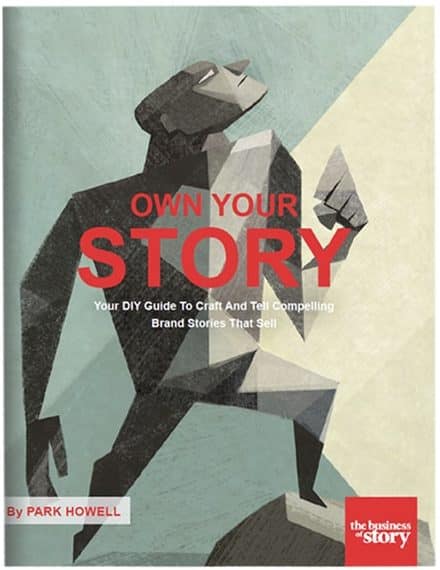 Let me help you create your brand story with our proven DIY Brand Story Strategy workbook. This 64-page guide, complete with examples and links to video tutorials, will help you clarify your story to grow revenue, amplify your impact and simplify your life.
Let me help you create your brand story with our proven DIY Brand Story Strategy workbook. This 64-page guide, complete with examples and links to video tutorials, will help you clarify your story to grow revenue, amplify your impact and simplify your life.
Download it now. It will bridge you and your brand to your bright new future.

